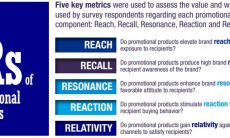I am more and more frequently being asked by companies to take a look at their choices for their marketing technology. Because these are large companies, they usually have a mishmosh of platforms that they have mixed and matched to create some semblance of order. Often they have multiple content management systems in different parts of the business. They all have a strategy. But I often don’t see clarity within that strategy.
With few exceptions, your goal should be to have a sole source strategy or a best-in-class strategy.
A sole source strategy says that, wherever possible, you will use the marketing stack components from a single vendor. Adobe is the one that usually wins these shoot-outs, at least at the moment, but you can pick whichever vendor seems to work for you. The benefits are that the vendor does the integration work between the components. The best vendors provide functions that are difficult or impossible when you roll your own stack.
A best-in-class strategy, on the other hand, means that you will always choose the best component for each part of the stack, no matter where it is from. Yes, your integration costs are higher, but the advantage is that you are always able to move to the next big thing and you are not held hostage by a single vendor on pricing.
Which strategy is better? I am a consultant, so it depends. That’s one of the reasons they ask me to take a look. But the point I am making is that it makes sense to pick one of these strategies or the other.
So far, so good. The problem is that I rarely see that kind of strategic clarity. What I usually see is that one vendor has a few components and you’ve mixed and matched the rest. Each time, you have a really good reason. It could be that you have been using a component for years and it works fine. It could be that you tried to have a best-in-class strategy but that your components got bought up by sole source vendors. It could bet that you haven’t really paid attention to either strategy, and just send out an RFP when a component gets long in the tooth.
Whatever the reason, it makes it hard to execute when you don’t have a strategy. Or when you don’t execute it. But I see lots of folks spending the time and money to integrate components that aren’t really best-in-class, and using most of the components for one vendor while missing the few key ones that actually make the single source approach worth it.
Taking the time to think through your approach makes all the difference, and execution of that approach is what delivers the return on investment.








